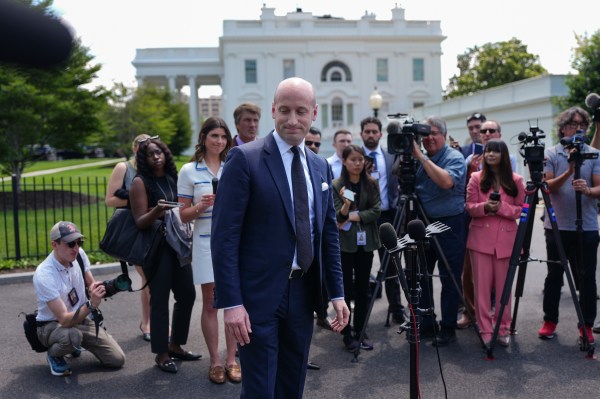In 2018, in the tiny northern Italian hamlet of Pordenone, a company known as Alpi Aviation SRL—a maker of light aircraft and mini-drones used by the Italian military in Afghanistan—was taken over by a new Hong Kong company named Mars Information Technology. That’s when the story, reported recently by the Wall Street Journal, gets interesting. Mars, Italian investigators have concluded, was a front company for two Chinese state and local government-owned firms, China Railway Rolling Stock Corp., or CRRC, and “an investment group controlled by the municipal government of Wuxi, a city near Shanghai.” What does a railway stock company and a local investment group want with an Italian drone maker?
The same thing the Chinese government wants all over Europe, Africa, the Middle East, Latin America, and, most importantly perhaps, the United States: artificial intelligence technology, military technology and advanced avionics, surveillance equipment, energy supplies, and more. You name it, Beijing wants it, wants to own it, and much of the time, doesn’t want you to be sure exactly who is using it and what for.
Back to little Alpi. Italian authorities believe the Chinese buyers substantially overpaid for their majority stake in the firm. And a year after its first investment, the now Chinese-owned Alpi transferred a military drone to the PRC, lying on the shipping manifest about both the product (which was not a “radio-controlled airplane model”) and its destination (apparently not an import fair in Shanghai).
By itself, this drone, capable as it may be, is not going to shift the global balance of power. But multiply the Alpi story thousands of times over, and an already well-known but largely unmanaged problem becomes slightly more visible. And for the curious—why can’t China build its own damn drones? Well, it can. But communism does not drive innovation the way free societies do; and why do the work if you can steal or buy it from someone else.
The question, as ever, is what to do about it. And as liberal democracies zero in on the growing threat posed by an expansionist, aggressive, and increasingly dictatorial Chinese Communist Party, there are myriad ideas, a growing consensus that “something” must be done. But there is almost no consensus on “what” must be done.
One victory has been notched for those who have long argued about the threat China poses: The challenge is no longer contested by any but the most ardent of Middle Kingdom sycophants. That’s it, however. The United States has tightened certain export controls on sensitive technologies, and probably has the best global screening system for inward investment in its so-called Committee on Foreign Investment in the United States (CFIUS) process. Presumably the Office of Personnel Management has locked the barn door after the 2015 loss of more than 22 million highly sensitive records of government employees, their families, and friends. Hopefully, Lockheed no longer has Chinese spyware sitting in its system. But the scope of both illicit and licit Chinese investment in and theft of U.S. technology and goods remains sky-high.
Scratching at the tiniest tip of the iceberg, per the researchers at Georgetown’s Center for Security and Emerging Technology, the China’s People’s Liberation Army is investing heavily in artificial intelligence, relying on American tech and capital to up its game on everything from back-end office equipment to surveillance and weaponry. They also note that the “overwhelming majority of advanced computer chips at the heart of China’s military AI systems are designed by U.S. firms like Intel, NVIDIA and Xilinx, and manufactured in Taiwan. We found that suppliers actually depicted NVIDIA-branded processors in photos of their products, providing clear evidence of the role U.S. technology plays in powering China’s advances.” (China is investing heavily in its own semiconductor manufacture, and experts believe that without substantial capital investment here in the U.S., Asia* will account for more than 80 percent of the global market by 2030. Legislation trying to up U.S. competition on semiconductors has languished for months on Capitol Hill, though the House and Senate leaders announced they would move it late Wednesday.)
Responding to congressional mandates, the Department of Defense also reports on “Communist Chinese military companies operating indirectly or directly in the United States,” and “Military-Civil Fusion” (MCF, basically Chinese public-private partnerships) contributors. The DOD provides aggregated lists now supplemented pursuant to a Biden executive order (that recast Trump administration orders) trying to identify, list, and limit sales and investment by American firms to those listed. Confused? Indeed. It should come as no surprise that research on which firms are involved, listed on which lists, written by which agency, restricting what activity, is dominated by links to law firms thrilled at the opportunity to help U.S. companies navigate the thicket of regulations.
Despite the scattershot nature of U.S. regulations and prohibitions (which bizarrely prohibit only firms on the Chinese Military Industrial Complex Companies list from listing on U.S. exchanges, allowing all others access to U.S. capital and U.S. pension fund investments in same), the United States is a veritable paragon of clarity and purpose in comparison to Europe. A study by a Dutch consulting firm in 2020 examined 650 Chinese investments in Europe since 2010, concluding that almost half have “high or moderate involvement by state-owned or state-controlled companies, including some in advanced technologies.” And as in the United States, the question of “beneficial ownership—who the ultimate buyer/investor actually is—is all too often concealed in a labyrinthine maze of holding companies, shell companies, and European fronts.
What are the Chinese after? Well, everything. Billions of oil and gas investments in Mozambique. Billions in non-traditional oil and gas projects in the United States. Shale in Canada. Egypt. Kazakhstan. Dozens and dozens of oil projects in Iraq. In short, Chinese overseas oil production is growing by leaps and bounds (in many cases, the Chinese state-owned companies are seeking to buy these assets from U.S. companies, particularly in Iraq). Some of these investments are direct Chinese state or state-subsidized purchases of foreign petrocarbon and alternative assets; some are indirect efforts to control key infrastructural sectors through Belt and Road debt trap diplomacy (see for example, Hambantota International Port in Sri Lanka).
Ideas about how to address the problem run the gamut. Some have suggested revitalizing CoCom (the Coordinating Committee for Multilateral Export Controls) that regulated arms exports during the Cold War. But CoCom was succeeded by the much weaker Wassenaar Arrangement, which is more committed to transparency than it is to regulating sales of militarily useful products, let alone combating Chinese aggression. (Not to speak of the fact that Russia is actually a member of Wassenaar.) Others have suggested beefing up Wassenaar and adding tech procurement to required disclosures.
The Trump administration took a more head-on, unilateral approach, sanctioning and banning Chinese companies directly, going after U.S.-China trade and Chinese exports, and targeting European firms and others that welcome investments and strategic infrastructure equipment from companies like Huawei. But the Biden administration, despite professions of concern, has slowed down the Trump frenzy, conflicted between European complaints about American heavy-handedness and a desire to co-opt the Chinese into joining the fight against climate change.
Yet others have suggested that the Group of 7 industrialized nations organize to compete with China, and coordinate a more unified strategy to address the panoply of political, economic, and military challenges from Beijing. And indeed, the G7 agreed to do just that, but with foreboding mutterings from the likes of Germany about the need for “nuance” and partnership. Additional suggestions have included creating a network of democratic nations to trade with each other, a closed virtuous circle of capitalist democracies that would agree to sell to one another and exclude baddies in Moscow and Beijing.
None of these ideas are terrible, and some may actually limit Chinese investment and theft and slightly stymie its defense build-up. But—and this is no searing insight—the devil is the details. Nations don’t want to stop doing business with China, because it’s lucrative and necessary. Theoretically, dividing desirable, non-dual-use like plastic toys or file cabinet exports from Huawei switching equipment and military drones should be possible. But it all demands leadership, unlikely from a Washington preoccupied with spending trillions and adjudicating kindergarten curricula. Nor will Europe step up to the plate, having retreated more with each passing year. Those directly in China’s gun sights—Japan and Australia and India—have increased their coordination and sharpened their defenses. But that alone will not address a global Chinese effort to infiltrate Western economies, defense industries, and international organizations.
The problem has been illuminated, and there is growing consensus about the risks and need for a response. Some new speed bumps have been erected. But many more are needed. Some insist the world must wait for China to do something truly egregious to prod Western democracies into action. But every day that goes by without an organized defense in place strengthens China’s hand. It would be good to have a plan. Not a list of concerns and bullet points. An executed plan.
*Correction: This article incorrectly claimed that China could account for more than 80 percent of global semiconductor production by 2030. It should have said Asia, not China.






Please note that we at The Dispatch hold ourselves, our work, and our commenters to a higher standard than other places on the internet. We welcome comments that foster genuine debate or discussion—including comments critical of us or our work—but responses that include ad hominem attacks on fellow Dispatch members or are intended to stoke fear and anger may be moderated.
With your membership, you only have the ability to comment on The Morning Dispatch articles. Consider upgrading to join the conversation everywhere.